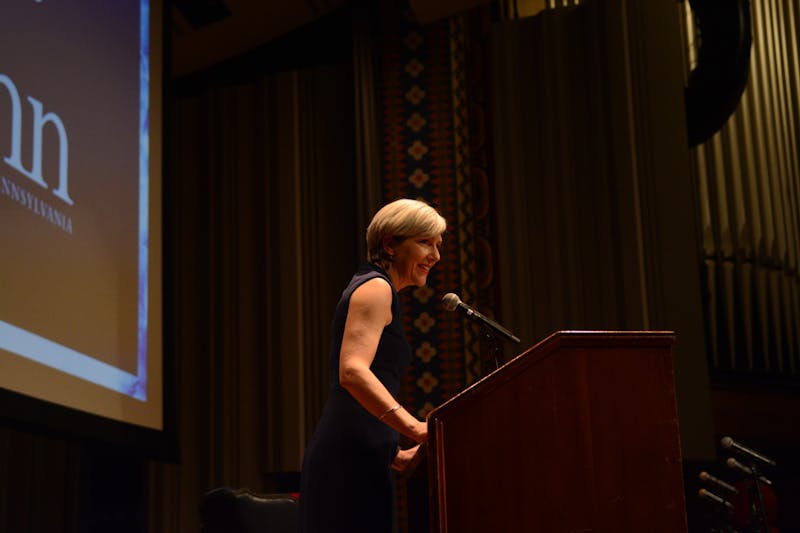The University lost one of its most revolutionary alumni ever on Saturday, when J. Presper Eckert -- one of the inventors of the world's first electronic digital computer, ENIAC -- died at the age of 76. Eckert, of Gladwyne, Pa. died on Saturday at Bryne Mawr Hospital after a long struggle with cancer. Unfortunately, this death came only six months before ENIAC's Fiftieth Anniversary Celebration at the University, for which Vice President Al Gore will be serving as an honorary Chairperson. Eckert, along with co-inventor John Mauchly, invented the Electronic Numerical Integrator and Computer in February 1946, which some experts believed to be the beginning and catalyst for the computer age. School of Engineering and Applied Sciences Dean Gregory Farrington knew Eckert personally, and called him a"truly engaging and fascinating man." "It was fun to be around him," he said. "His partnership with John Mauchly in creating ENIAC, is the stuff of legend, and ENIAC is widely credited with giving birth to the computer age and the now the information age. "While many creative people contributed to the development of computers, it was ENIAC that captured people's imagination and gave them a glimpse of the future," Farrington added. "From it, the computer industry began its exponential development, which continues to this day." Eckert began work along with Mauchly on ENIAC in 1943, as a 23 year old research associate at the University. The impetus for the gigantic computer was the U.S. army, who wanted to speed up calculations in order to aim their big guns. At the time it took about 12 hours to plot the flight of each projectile. But with the invention of ENIAC, a trajectory could be done in 30 seconds, 1,440 times faster. And on April 9, 1943, Eckert's 24th birthday, the Army gave the University $150,000 to start building the mammoth calculator. Two and a half years later, after 200 people spent sometimes 16 to 20 hours a day working on the project, it was finally completed on February 14,1946. The ENIAC weighed more than 30 tons and was comprised of 40 panels arranged in the shape of an 80 foot "U." The colossal machine contained 18,000 vacuum tubes, 500,00 soldered joints, 70,000 resistors and 10,000 capacitors. According to Paul Shaffer, curator of the Eniac Museum in the Moore Building , many scientists and engineers mocked the idea of using vacuum tubes. But, he added Eckert and Mauchly would not be dissuaded. "Eckert and Mauchly had the courage to proceed in what was obvious to many people at the time, a foolish task," Shaffer said. "They proved it could be done, and there was no turning back from there." Shaffer credits the ENIAC for the development of the space program and many other facets of people's daily lives. After ENIAC was completed, Eckert and Mauchly stayed at the University for a year before being fired over a dispute concerning the commercial rights of the machine. Later in 1946 the two founded the Eckert-Mauchly Computer Corporation. In 1950 Remington Rand took over their company and eventually after a few mergers the company became known as the Unisys Corporation. Eckert, who was granted 87 U.S. patents, remained vice president of the Unisys Corp until 1989, when he retired. Some of the awards Eckert received over the years include the National Medal of Science awarded, which was given to him by Lyndon Johnson in 1969,the Distinguished Alumnus Award from the University and the Howard N. Potts Medal of the Franklin Institute and the Philadelphia Award. Services were held yesterday at St. Christopher's Episcopal Church in Gladwyne. Burial followed at Valley Forge Memorial Gardens. Eckert is survived by his wife Judith and a daughter, three sons and 3 grandchildren.
The Daily Pennsylvanian is an independent, student-run newspaper. Please consider making a donation to support the coverage that shapes the University. Your generosity ensures a future of strong journalism at Penn.
DonatePlease note All comments are eligible for publication in The Daily Pennsylvanian.







